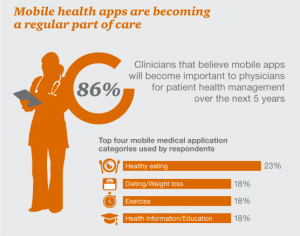If you read our blog post 5 Top Telemeds Trend of 2015, you know that telehealth is slowly revolutionizing the healthcare world for the better. From remote patient monitoring to distance education, telehealth practices and services are benefiting not only healthcare providers and organization but also patients. With telehealth becoming a popular healthcare news topic, we thought it would be helpful to compile a list of the most commonly used terms in telehealth.
Telehealth
Let’s start with the obvious: Telehealth. What does it actually mean? According to the HRSA, telehealth “is the use of electronic information and telecommunications technologies to support long-distance clinical health care, patient and professional health-related education, public health and health administration.”
Telemedicine
Very similar to telehealth, telemedicine is “the use of medical information exchanged from one site to another via electronic communications to improve a patient’s clinical health status. Telemedicine includes a growing variety of applications and services using two-way video, email, smart phones, wireless tools and other forms of telecommunications technology.”
The American Telemedicine Association reminds us that telehealth and telemedicine are not single specialties but working arms of the healthcare ecosystem. And often considered an important part of health IT initiatives and clinical care services.
mHealth
mHealth is term used to describe the use of wireless and mobile devices to generate, aggregate and disseminate health information. Examples: fitness apps, weight management devices, and smart pill systems.

Store-and-forward (asynchronous)
According to The Natinal Telehealth Policy Research Center, store-and-forward technology refers to technologies that “allow for the electronic transmission of medical information, such as digital images, documents, and pre-recorded videos through secure email transmission.” Over secure communication systems practitioners or specialists are then able to “evaluate the case or render a service outside of a real-time or live interaction“. Examples of medical information that can be transmitted electronically: patient information, x-rays and photos.
Real-time and interactive (synchronous)
“Live, two-way interaction between a person (patient, caregiver, or provider) and a provider using audiovisual telecommunications technology,” is considered real-time or synchronous telehealth. “This type of service is also referred to as “real-time” and may serve as a substitute for an in-person encounter when it is not available.” It’s the most common type of telehealth service, according to The National Telehealth Policy Research Center. Real-time and interactive telehealth services are also becoming crucial to helping with medical education and trainings. Example: Live video stream of consultations, treatment services, and medical trainings.
Remote patient monitoring
Remote patient monitoring uses “uses digital technologies to collect medical and other forms of health data from individuals in one location and electronically transmit that information securely to health care providers in a different location for assessment and recommendations.” RPM makes it possible for medical professional to monitor patients’ weight, blood pressure, and even vital signs from a distance. According to The National Telehealth Policy Research Center also reports that RPM helps helps keep “healthy people healthy, allow older and disabled individuals to live at home longer and avoid having to move into skilled nursing facilities.” RPM can also help decrease readmissions and increase medication adherence.
Interoperability
Interoperability is term we see a lot in both Health IT and telehealth and we think it’s best to use the official HealthIT.gov definition. Please see below:
“Interoperability is the ability of two or more systems to communicate — or exchange — information and to use the information that has been exchanged. Interoperability is NOT the same thing as health information exchange. Exchanging information is only part of the picture; once the information has been exchanged, it must be useable by the recipient. Providers using different systems may not be able to share and use information, so ONC is working to set national standards to make sure that all electronic health record systems are able to work together seamlessly. ONC is coordinating with the health IT community in an open and transparent process to develop and unify standards, guidelines and policies for interoperable health information exchange.”
